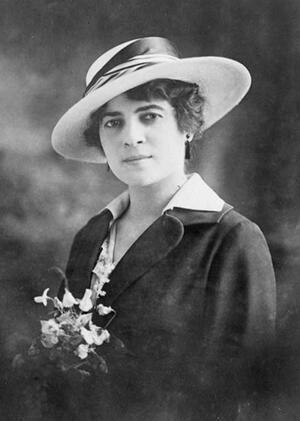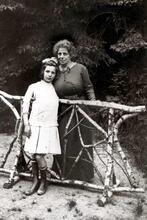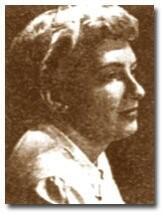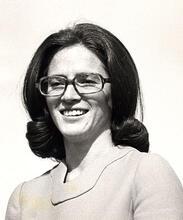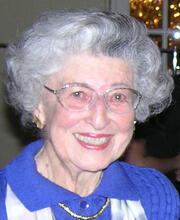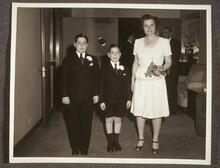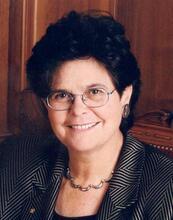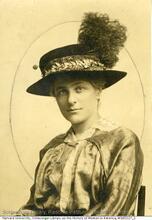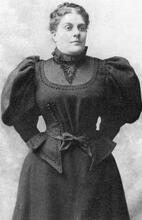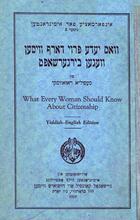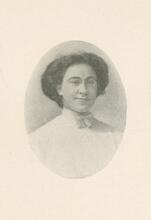Clarice Baright
In a career spanning the first half of the twentieth century, Clarice Baright (1881-1961), the "Lady Angel of the Tenement District," fought for the rights of New York City's children and poor while earning the distinctions of serving as the second female magistrate in the city's history and of being among the first few women admitted to the American Bar Association.
Institution: U.S. Library of Congress.
Clarice Baright was one of the first women admitted to the American Bar Association and the second woman to become a magistrate in New York City. Baright took night classes at New York University Law School and took the bar exam in 1905. She focused her law career on juvenile delinquency and wrote several books on the psychology of child crime. She was also the first to bring an official motion to demand women judges. She was recommended for the bench in 1915 but was rejected; she finally earned the honor in 1925 as a brief replacement for a judge who was ill. She joined a law practice and became a full partner in 1950, retiring in 1958.
Family and Education
Known to her contemporaries as the “Lady Angel of the Tenement District,” Clarice Baright was a social worker and a trailblazing attorney who combined these skills as an advocate for the rights of New York City’s children and its poor. In a career spanning the first half of the twentieth century, Baright fought for reforms in the style and spirit of the Progressive Era, while earning the distinctions of serving as the second female magistrate in New York City history and of being among the first few women admitted to the American Bar Association.
The youngest of five children of Jewish parents, Elizabeth and Shussman Margoles, Baright was born Sadie Margoles in Vienna, Austria, in 1881. Her family immigrated to New York’s Lower East Side when she was three years old. After graduating from New York University as a young adult, she returned to Europe to study social conditions and then enrolled in the night division of New York University’s law school in 1903. Although she was not a candidate for a law degree and never received one, she was admitted to the New York State Bar Association in 1905.
Career
The following year Clarice married insurance agent George Frances Baright, the son of a Protestant minister. George had two daughters from a previous marriage, Gertrude and Dorothy, whom Baright embraced as her own. For the next ten years she devoted herself to the problems of juvenile delinquency, combining fieldwork with theoretical endeavors such as authoring works on the psychology of child crime and developing and promoting the idea of a juvenile police force.
Baright’s hard work in this area was recognized in 1915, when she was recommended for a seat on the bench of the New York City Court of Special Sessions in the Family Court division. Her candidacy was rejected at this time by Mayor John Mitchel, so Baright threw her energies into the practice of law, reputedly becoming the first woman to try a case before an army general court-martial. After gaining admission to the New York State and American Bar Associations in 1916 and 1919, respectively, she further distinguished herself in 1925 by serving as legal adviser to the Metropolitan Housewives League and other civic groups fighting for improvements in the then privately owned subway system.
Baright’s career took an even more public turn later that year, when she was appointed by Mayor John Hylan to the same court from which she had been denied a seat a decade earlier. While this appointment made her New York’s second female magistrate, she served only a thirty-day term as a replacement for one of the other judges, who was ill. Seeking a more permanent judicial position, she was passed over by Mayor James Walker for the same court in 1927 and by Governor Herbert Lehman for a New York State Supreme Court vacancy in 1934. Undeterred, Baright remained active in politics, generally supporting and advising Democratic candidates.
She also kept up an active legal practice, maintaining an affiliation with the law firm Markewich and Null, which later became Markewich, Rosenhaus, Beck, and Garfinkle. She became a formal member of this firm in 1950 and remained one until her retirement from legal practice in 1958. Her death in 1961 brought to a conclusion a life filled with both accomplishments and disappointment. Unable to secure more than a temporary position in government, Baright was nevertheless a crusader for women in the legal profession and a vigorous and effective advocate for social justice.
Krone, Judith P. “Clarice Margoles Baright.” Advanced reference paper, Emory University, December 1979.
“Mrs. Baright, Ex-Lawyer, Author, Dies.” New York Herald Tribune, January 9, 1961, 25.
“Mrs. Baright, 75, A Former Judge.” NYTimes, January 9, 1961, 39:2.
UJE.

